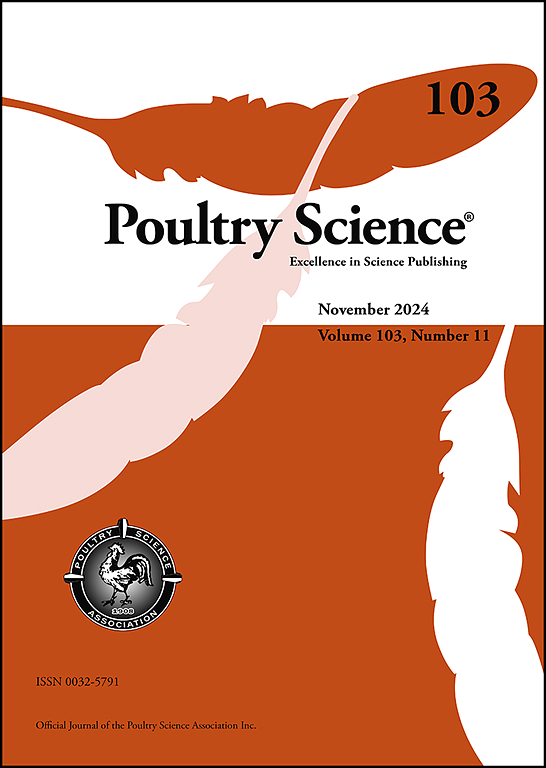Immunogenicity of a novel HMT13 adjuvant-based inactivated vaccine against Avian pathogenic Escherichia coli serogroups O36, O78, and O109
IF 3.8
1区 农林科学
Q1 AGRICULTURE, DAIRY & ANIMAL SCIENCE
引用次数: 0
Abstract
Avian colibacillosis, mainly caused by avian pathogenic Escherichia coli (APEC), is one of the most prominent diseases in the poultry industry. Inactivated vaccines are crucial for preventing and controlling APEC infection, with adjuvants playing a key role in ensuring their effectiveness. However, traditional oil-emulsion inactivated vaccines often cause severe adverse reactions in animals. Based on the serogroups of 343 clinically isolated APEC strains from many provinces of China, O36, O78 and O109 were identified as the predominant serogroups currently circulating in these regions, with O36 and O109 being rarely noticed before. Consequently, we further screened these three dominant serogroups for their promising immunogenicity to develop effective inactivated vaccines. The immune side effects of 7 adjuvants including water-in-oil emulsions (Marc-52, ISA 71 VG, and ISA 78 VG), water-in-oil-in-water emulsions (ADJ 501 and HMT 13), oil-in-water emulsion (ADJ 2052), and aluminum hydroxide gels were evaluated and compared. The results showed that the vaccine formulated with HMT 13 as an adjuvant exhibited sufficient protective efficacy against homotypic APEC infection while effectively stimulating humoral and cellular immune responses. Moreover, inactivated vaccines containing HMT 13 could be easily absorbed at the inoculation site without interfering with chicken growth; they also possessed favorable emulsification properties facilitating storage. Therefore, HMT 13 represents an excellent adjuvant for developing an inactivated vaccine against chicken colibacillosis. This study presents a novel multivalent inactivated vaccine against chicken colibacillosis based on the use of HMT13 as an adjuvant, which offers a new approach for the prevention and control of APEC currently prevalent in most of China.
求助全文
约1分钟内获得全文
求助全文
来源期刊

Poultry Science
农林科学-奶制品与动物科学
CiteScore
7.60
自引率
15.90%
发文量
0
审稿时长
94 days
期刊介绍:
First self-published in 1921, Poultry Science is an internationally renowned monthly journal, known as the authoritative source for a broad range of poultry information and high-caliber research. The journal plays a pivotal role in the dissemination of preeminent poultry-related knowledge across all disciplines. As of January 2020, Poultry Science will become an Open Access journal with no subscription charges, meaning authors who publish here can make their research immediately, permanently, and freely accessible worldwide while retaining copyright to their work. Papers submitted for publication after October 1, 2019 will be published as Open Access papers.
An international journal, Poultry Science publishes original papers, research notes, symposium papers, and reviews of basic science as applied to poultry. This authoritative source of poultry information is consistently ranked by ISI Impact Factor as one of the top 10 agriculture, dairy and animal science journals to deliver high-caliber research. Currently it is the highest-ranked (by Impact Factor and Eigenfactor) journal dedicated to publishing poultry research. Subject areas include breeding, genetics, education, production, management, environment, health, behavior, welfare, immunology, molecular biology, metabolism, nutrition, physiology, reproduction, processing, and products.
 求助内容:
求助内容: 应助结果提醒方式:
应助结果提醒方式:


